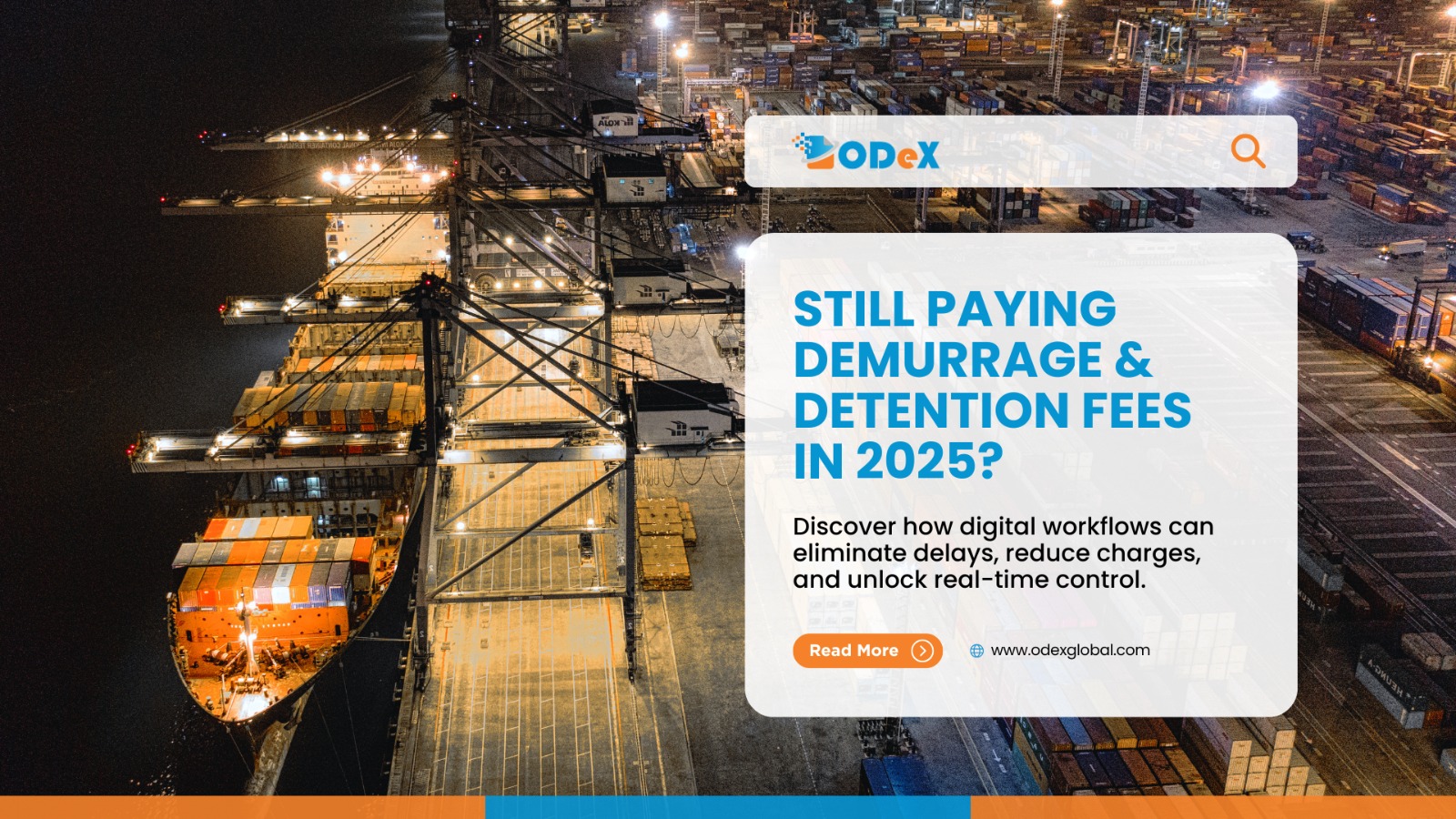Container demurrage and detention are a headache How digital workflows can help
Even in 2025, container detention and demurrage charges remain one of the most frustrating and avoidable costs in shipping. While rates and regulations vary from port to port and carrier to carrier, one truth is consistent across the industry: most of these charges arise from communication delays and document hold-ups.
The good news? These issues are avoidable—and digitisation is the key.
A recurring pain point
Let’s paint a typical scenario. A shipment arrives on time, but the Delivery Order is delayed due to a missed invoice approval. Or a payment goes through, but the release confirmation gets lost in a flood of emails. As the clock ticks, so do the charges—often adding hundreds or even thousands of dollars to a single shipment.
This isn’t a rare exception. It’s a daily occurrence in global freight.
Why Demurrage and Detention still happens
There are many operational reasons, but the most common culprits are:
- Late or missed payment confirmations
- Manual paperwork delays
- Unclear document ownership or handover timelines
- Poor coordination between stakeholders (carrier, forwarder, consignee)
And during peak seasons or global disruptions, these issues only get worse.
The case for digital workflow
While shipping lines and regulators continue to debate how to “reform” D&D practices, companies who have digitised their internal workflows are already seeing measurable reductions in unnecessary charges.
Here’s how digital documentation and payments platforms help reduce or eliminate D&D costs:
-
Faster document turnaround - With digital platforms, shipping documents like invoices and delivery orders are uploaded, shared, and approved in real-time. There’s no need to print, courier, or wait for office hours. This shortens the “waiting window” between cargo arrival and container release.
-
Clear audit trails and notifications - When every document, timestamp, and action is logged in a shared platform, there’s no room for miscommunication. Notifications and reminders ensure that payment deadlines aren’t missed, and everyone stays in sync.
-
Instant release after payment - Once a payment is confirmed, the delivery order is automatically triggered for release—helping avoid the dreaded delay between payment and cargo clearance. Platforms with PayPal and integrated payment systems are enabling cargo releases within minutes, not days.
-
Reduced risk of errors - Manual document handling often results in incorrect container numbers, outdated instructions, or missed charges. These mistakes—no matter how small—can lead to holds at the terminal, which again result in charges.
Digital workflows ensure that all parties are working off the same version of the truth.
Reefer case study
A freight forwarder handling reefer cargo in Houston shared a case where they previously incurred over $20,000 in D&D charges in one quarter alone. After digitising their documentation flow and integrating payment approvals, they reduced their average container release time by 36 hours—cutting D&D by more than half within six months.
The forwarder’s takeaway? “Most of our charges were preventable. We just didn’t have the visibility before.”
Shifting from reactive to proactive
The industry talks a lot about “visibility” and “efficiency,” but what it really needs is proactive action. A digital-first approach doesn’t just help you avoid penalties—it enables better planning, smoother coordination, and less stress for your teams and customers alike.
When you’re not stuck chasing a DO or arguing over payment status, you’re free to focus on what really matters: delivering on time, every time.
Conclusion
Container detention and demurrage won’t disappear overnight—but your exposure to them absolutely can be reduced.
By embracing digital workflows for document handling and payment processing, you create a system that is faster, smarter, and more transparent.
In a world of rising costs and unpredictable disruptions, even a few hours saved can translate into thousands of dollars protected. Now that’s a smart move.


















